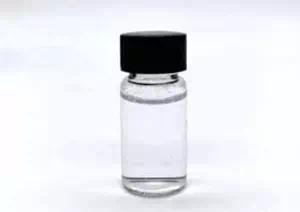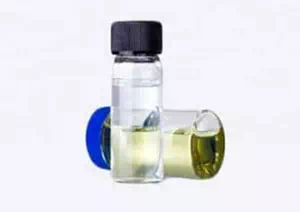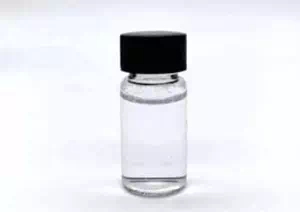All Categories



n-n-dimethylacetamide CAS 127-19-5, n-n-dimethylacetamide, CAS 127-19-5
N, N-dimethylamine, this chemical substance holds a unique and significant position in the field of chemistry. It has several names, among which acetyl dimethylamine is its more common alternative name.
CAS : 127-19-5
Formula : C4H9NO
Mol. wt. : 87.12
EINECS : 204-826-4
Chemical Name | N,N-Dimethylacetamide |
Other Name | Dimethylacetamide; Acetic acid dimethylacetamide; Acetyldimethylamine |
CAS | 127-19-5 |
EINECS | 204-826-4 |
Type | Organic raw materials; pharmaceutical, pesticide and dye intermediates |
Molecular Formula | C4H9NO |
Molecular Weight | 87.12 |

Melting point | -20 °C (lit.) |
Boiling point | 164.5-166 °C (lit.) |
density | 0.937 g/mL at 25 °C (lit.) |
vapor density | 3.89 (vs air) |
vapor pressure | 40 mm Hg ( 19.4 °C) |
refractive index | n20/D 1.439(lit.) |
Fp | 158 °F |
storage temp. | Store below +30°C. |
solubility | >1000g/l soluble |
form | Liquid |
N, N-dimethylamine, this chemical substance holds a unique and significant position in the field of chemistry. It has several names, among which acetyl dimethylamine is its more common alternative name. In daily chemical communication and literature records, it is also often simply referred to as DMAC.
From the perspective of chemical properties, N, N-dimethylacetamide is a non-protonic highly polar solvent. The so-called non-protic property means that when it participates in chemical reactions or acts as a solvent, it does not provide or accept protons like protic solvents do, which gives it a unique advantage in many proton-sensitive reaction systems. Its highly polar feature endows it with a powerful dissolving capacity. It has a slight ammonia smell. Although this smell is not strong, it can be detected during actual operation and storage, which has also become one of the features for identifying it.
In terms of solubility, N, N-dimethylacetamide has demonstrated extremely outstanding performance. It can be widely miscible with many substances, including water, aromatic compounds, esters, ketones, alcohols, ethers, benzene and chloroform, etc. This wide miscibility enables it to adapt to a variety of different reaction systems and substance combinations in chemical experiments and industrial production, providing an excellent homogeneous environment for various chemical reactions. Moreover, it can also activate compound molecules. This property enables it not only to exist as a passive solvent in chemical reactions but also to actively participate in the reaction process and promote its progress. Therefore, in practical application scenarios, it is widely used as a solvent and catalyst.
In terms of its application as a solvent, N, N-dimethylacetamide has demonstrated outstanding performance due to its high boiling point, high flash point, high thermal stability and good chemical stability. For instance, in the spinning process of polyacrylonitrile, it can serve as a spinning solvent, effectively dissolving the polyacrylonitrile polymer to form a uniform spinning solution, thereby ensuring the smooth progress of the spinning process. For both synthetic and natural resins, it is also an ideal solvent, which can help the resins dissolve and process better, and improve the quality of resin products. In the spinning process of copolymers such as vinyl formate and pyridine vinyl, N, N-dimethylacetamide also plays an indispensable role, which can ensure that the copolymers maintain good fluidity and filamination during the spinning process. In addition, during the dissolution process of aromatic carboxylic acids, it can also rely on its own excellent dissolution performance to fully dissolve aromatic carboxylic acids, providing convenience for subsequent reactions or processing.
In terms of the application of catalysts, N, N-dimethylacetamide has demonstrated its unique catalytic ability. In the reaction of heating urea to produce cyanuric acid, it can effectively promote the reaction, improve the efficiency of the reaction and the purity of the product. In the process of reacting alkyl halides with metal cyanides to produce nitriles, it can act as a catalyst to lower the activation energy of the reaction, making it easier for the reaction to occur, while simultaneously increasing the yield and quality of nitriles. Similarly, in processes such as the reaction of sodium acetylene with alkyl halides to produce acetylene and the reaction of organic halides with cyanate esters to produce isocyanate esters, N, N-dimethylacetamide can play its catalytic role, optimize reaction conditions, and improve the selectivity and yield of the reaction.
In addition to its outstanding applications in the fields of solvents and catalysts, N, N-dimethylacetamide also has a variety of other uses. During the electrolysis process, it can serve as an electrolytic solvent, providing a stable medium environment for the electrolytic reaction and ensuring the smooth progress of the electrolysis process. During the production process of the photographic coupler, it can act as a solvent to help dissolve and disperse various chemical substances, ensuring the performance and quality of the photographic coupler. In terms of paint removers, it can effectively dissolve coating substances such as paint, facilitating paint removal operations. In the field of organic synthesis, it serves as an important raw material and participates in the synthesis process of various organic compounds, providing a foundation for the synthesis of new organic molecules. In the pesticide and pharmaceutical industries, it is also one of the indispensable raw materials and can be used to synthesize various active ingredients of pesticides and drugs. In addition, during the process of separating styrene from the C8 fraction, it can also be used as an extractive distillation solvent. By taking advantage of its unique solubility and selectivity, it can effectively separate styrene from other components.

"Pharmaceutical intermediates
In the field of medicine, dimethylacetamide plays a crucial role. As a key raw material for pharmaceuticals, it is widely used in the production processes of numerous drugs. Among them, dimethylacetamide plays an indispensable role in the production of broad-spectrum antibiotics such as amoxicillin and drugs with important antibacterial effects such as cephalosporins. Compared with traditional organic solvents, dimethylacetamide, with its unique chemical properties, can significantly improve the quality and yield of the product when used as a solvent or co-catalyst in drug synthesis reactions. It can provide a more suitable reaction environment for the synthesis of drug molecules, enabling chemical reactions to proceed more efficiently and precisely. This ensures a higher content and better purity of the active ingredients in the drug, thereby enhancing the overall quality and therapeutic effect of the drug.
"Acrylic Fiber production
In the field of acrylic fiber production, there are rich and diverse production process routes, among which the dimethylacetamide route is an important production method. At present, the production of acrylic fiber in China is mainly divided into two types based on the different solvents used: the two-step sodium thiocyanate method, the one-step dimethylformamide method, and the organic wet dimethylacetamide method. When conducting a comprehensive and integrated comparison of these three production processes, multiple dimensions need to be considered, including the characteristics of the process equipment, the consumption of various materials, the degree of environmental impact, the quality of the final product, and the subsequent processing procedures, etc. At the same time, multiple factors such as the quality of processing performance, the domestic production rate of equipment, and the development trend of acrylic fiber production abroad should also be taken into account. After such a comprehensive and detailed comparative analysis, it can be found that the two-step method of sodium thiocyanate and the organic wet method of dimethylacetamide show obvious advantages in many aspects and have broad prospects for development. In fact, many acrylic fiber production facilities in China currently adopt the wet process with dimethylacetamide as the solvent. This process has demonstrated excellent production efficiency and product quality stability in practical applications.
"Synthesis of Polymers
In the field of polymer synthesis, dimethylacetamide has demonstrated outstanding dissolving ability, especially showing excellent dissolving effects on various resins, among which polyurethane resins and polyimide resins are particularly worth mentioning. This excellent solubility makes dimethylacetamide a very important solvent in the process of polymer synthesis. It is mainly used as a solvent in many fields such as heat-resistant synthetic fibers, plastic films, coatings, medicine and acrylonitrile spinning. From an international perspective, currently in the polymer production abroad, dimethylacetamide is mostly used to produce high-end products such as polyimide films, soluble polyimide, polyimide-polyperfluoroethylene-propylene composite films, polyimide (aluminum) films, and soluble polyimide molding powder. In China, dimethylacetamide also plays a significant role and is widely used as an excellent polar solvent in the spinning of high-molecular synthetic fibers and other organic synthesis processes, providing strong support for the development of China's polymer synthesis industry.
"Organic pigments
In the production process of organic pigments, the selection of solvents has a crucial impact on product quality. In the past, many devices used dimethylformamide as the solvent when producing organic pigments. However, in actual production, it was found that the products produced with this solvent lagged far behind similar foreign products in terms of chromaticity. To improve this situation and enhance product quality, some devices have undergone process improvements and attempted to use dimethylacetamide as the solvent instead. After practical verification, this change has achieved remarkable results. The product quality has been significantly improved, especially in terms of chromaticity, which has met the relevant standards and even the strict chromaticity requirements for export products. This has added a strong weight to the competitiveness of China's organic pigments in the international market.
"Petrochemical industry
In the vast and complex industrial process of petrochemicals, dimethylacetamide is a highly favored and excellent catalyst. Among numerous chemical reactions, such as cyclization reactions, halogenation reactions, cyanation reactions, alkylation reactions and dehydrogenation reactions, dimethylacetamide can play its unique catalytic role. It is like an efficient "booster", capable of accelerating the progress of these chemical reactions, making them faster and more efficient. More importantly, it can also significantly increase the yield of the main products, which means that under the same production conditions, more target products can be obtained, thereby effectively improving production efficiency, reducing production costs, and providing strong technical support for the sustainable development of the petrochemical industry.
Other aspects
In many other aspects of chemical production, dimethylacetamide also has extensive applications. For instance, in the process of extracting butadiene from ethylene cracking gas C4, there are many solvents to choose from, and many sets of advanced production equipment at home and abroad all use dimethylacetamide as the solvent. In the nylon 66 salt cyclohexanol plant, dimethylacetamide is also widely used as a solvent for separating pure benzene, cyclohexane and cyclohexene. With its good solubility and selectivity, it can effectively achieve the separation and purification of these substances. In addition, in the field of pesticide production, dimethylacetamide can also be used as a solvent or co-catalyst. Compared with traditional organic solvents, it can improve the quality of pesticides in the production process, making the active ingredients of pesticides more stable and of higher purity. At the same time, it can also increase the yield and reduce waste in the production process, providing beneficial assistance for the efficient development of the pesticide industry.
* Prompt reply and 24 hours online, professional team to provide best price and high quality product.
* Sample testing support.
* Every batch of products will be tested to ensureits quality.
*The packing also can be according the customers` requirment.
*Any inquiries will be replied within 24 hours.
*we provide Commerical Invoice, Packing List, Bill of loading, COA , Health certificate and Origin certificate. If your markets have any special requirements, let us know.